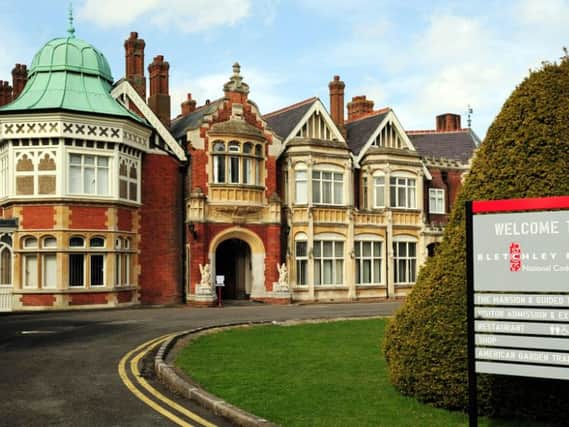Bletchley Park codebreaker from Yorkshire who helped crack Enigma dies at 104


A native of Hull, he was also an author who vividly reconjured life in the East Riding in the years after the first conflict.
He was just a few months old when his father Christian, a customs officer at Hull’s thriving part, enlisted in the 10th East Yorkshires. It was his mother Clara who brought him up – fleeing to Beverley to be out of range of the Zeppelin raids.
Advertisement
Hide AdAdvertisement
Hide AdIt was, he said, a place in which the peace of a well-ordered pre-war society continued to be maintained, and in his book Boyhood in Beverley he described his early life as one of only four boys in the kindergarten class at the new Beverley High School for Girls. The other three included future film-maker Ken Annakin, director of Battle of the Bulge.
Despite the unfolding horror around him, he recalled that the greatest danger came from a small Yorkshire terrier which lived up the road. It was, he said, a horrible, snarling monster.
In contrast, the common land known as the Westwood, which had been given to Beverley’s people by the Lord of the Manor in 1380, was a “paradise for children” who could walk over daisies and watch cows roam freely.
His father, a Regimental Sergeant Major, was wounded by shrapnel in France five days before the Battle of the Somme, and was sent home for a while, and his son later constructed an account of the March Retreat of 1918, when the Germans launched an onslaught on British lines. Sgt Maj Thirsk, stationed near St Quentin, wrote of trying to save an airman from his burning plane – but he was too late.
Advertisement
Hide AdAdvertisement
Hide AdHis son, after eight years at Beverley Grammar, went to work as an office boy at County Hall, where one of his jobs was to place quill-pens on the desks of the councillors and aldermen before each council meeting.
He went next to Beverley’s East Riding county library and gained a qualification, but any thoughts of a career were put on hold when in 1940 he was called up.
After spells in the infantry and the artillery, he applied to join the Intelligence Corps, which sent him first to Beaumanor, a country house in Leicestershire that the War Office had requisitioned, and then to Bletchley Park, outside Milton Keynes.
He wrote that he had come across an army council instruction that read: “Men required urgently for the Intelligence Corps”. No details were given, but he said: “I thought, this sounds interesting; all sorts of clandestine assignments.”
Advertisement
Hide AdAdvertisement
Hide AdAt Beaumanor, he enquired of Lt Rodney Bax, the officer in charge, whether the British had been able to decipher any of the messages composed by German troops on their mechanical Enigma devices.
Bax told him that the British “were not concerned with cryptography”, prompting the young Bombardier Thirsk to note that he was “a good liar”.
He described in The Bletchley Park Codebreakers, a book of accounts compiled in 2011 by Michael Smith and Ralph Erskine, the moment the codebreaking operation was revealed to him.
“It was a memorable day for all of us,” he said. “Before we were told about Enigma, we were trying to construct a picture with a jigsaw lacking many pieces. Now we had a new zest for the work, with access to a wealth of information about the German networks we were studying.”
Advertisement
Hide AdAdvertisement
Hide AdHe also wrote that while “a lot has been made of Bletchley being full of geniuses, most of us were just ordinary people doing our jobs”.
He spent three years there, during which time he met his future wife, Joan Watkins, an Oxford don. They married a few months after VE Day, and moved to London, where Jimmy resumed his career as a librarian.
She became a distinguished agricultural historian and the two moved eventually to a neo-Gothic castle in Kent.
But part of him remained in Beverley, and he wrote in 2003: “I can still imagine cycling through those familiar streets; in truth, if ghosts exist of people and bicycles, I shall probably be seen there many years hence.”
He is survived by his son Martin, daughter Jane, four grandchildren and a sister, Betty. His brother, David, was killed during the Second World War.